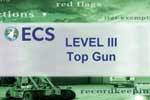Key Findings
The Asia-Pacific vetronics market is set to record a CAGR of 4.57% during the forecast period, 2022-2030. One of the significant factors driving the market growth is military expenditure. Also, several nations are investing in modernizing their land-based fleet with the latest upgrades to maintain their dominance. However, the regulations on the export and import of electronic components and the recurring disputes between China and India are evaluated to hinder the market growth.
Market Insights
Vietnam, South Korea, Taiwan, Thailand, India, China, Japan, and Rest of Asia-Pacific are evaluated for the Asia-Pacific vetronics market growth analysis. In Japan, defense purchases contribute to market growth. For instance, the Japan Land Self-Defense Force purchased an armored military tank-based self-propelled long-range howitzer. In addition, the government is set to procure new howitzers for USD 44 million. Product developments like semi-automatic munition firing and automatic gun laying systems in the new 155 mm/52 caliber wheeled self-propelled howitzers from Japan Steel Works.
In Vietnam, the military expenditure has increased seven times since 2003, though remaining constant at 2.34% of GDP. Also, the country bases its national defense budget on its rate of socioeconomic growth with regard to the State Budget Law of the nation. However, Vietnam’s military modernization future is dependent on China’s economic conditions, given the former’s strong economic dependence on the latter. Whereas, in India, mechanized infantry is being restructured to acquire strategic territorial mobility and robust firepower. Accordingly, the country plans to build the Arjun MK-II variant and deploy 1,657 T-90s MBTs made by Russia. Such factors drive market growth in these countries.
Competitive Insights
Some of the eminent companies in the market include Lockheed Martin, Norinco – China, Leonardo SPA, Northrop Grumman, etc.
Our report offerings include:
- Explore key findings of the overall market
- Strategic breakdown of market dynamics (Drivers, Restraints, Opportunities, Challenges)
- Market forecasts for a minimum of 9 years, along with 3 years of historical data for all segments, sub-segments, and regions
- Market Segmentation caters to a thorough assessment of key segments with their market estimations
- Geographical Analysis: Assessments of the mentioned regions and country-level segments with their market share
- Key analytics: Porter’s Five Forces Analysis, Vendor Landscape, Opportunity Matrix, Key Buying Criteria, etc.
- Competitive landscape is the theoretical explanation of the key companies based on factors, market share, etc.
- Company profiling: A detailed company overview, product/services offered, SCOT analysis, and recent strategic developments




